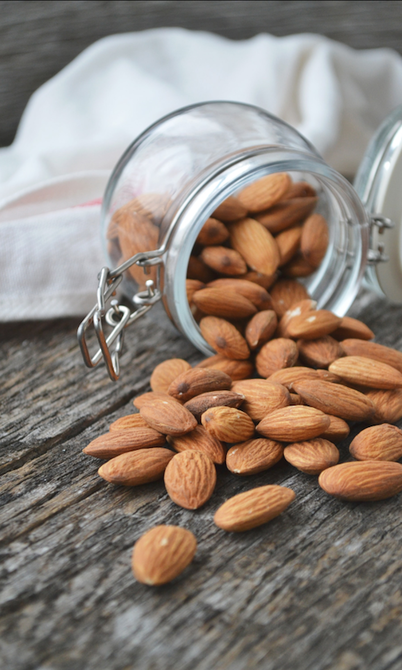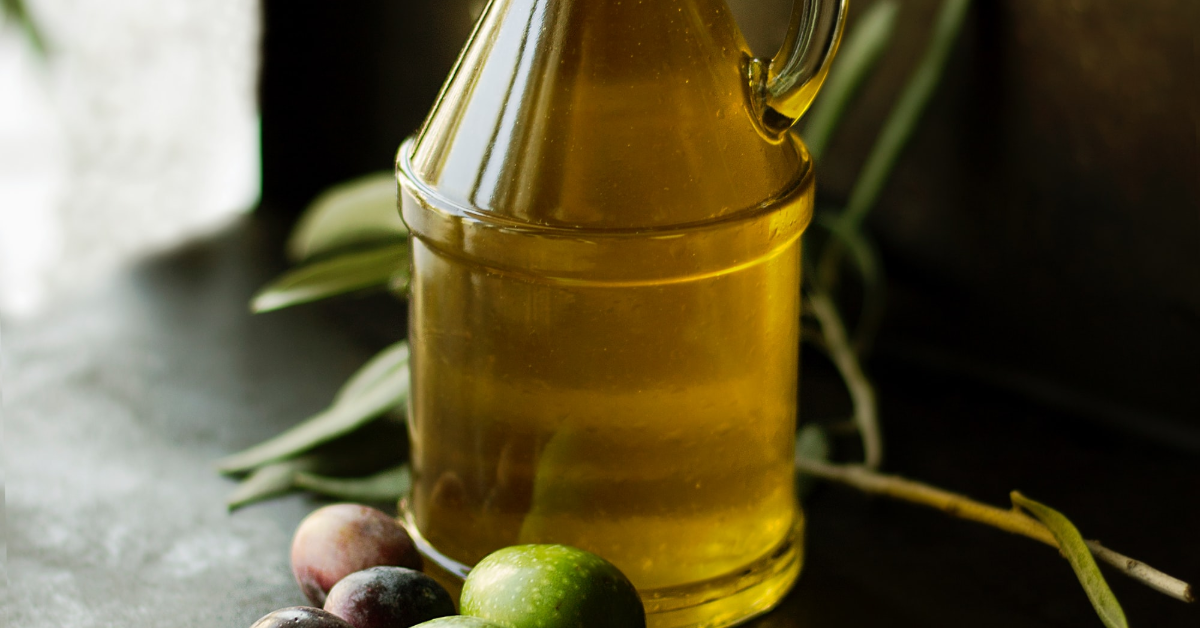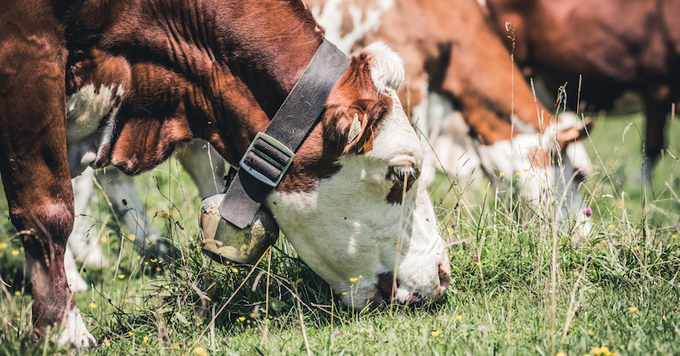|
To eat fat, or not to eat fat? That is the question. The path to the answer may be incredibly complicated, but the bottom line is much simpler. Eat as much as you want of the “right” fats. What are the “right fats” for you? Well…. that depends. The dietary Fat Cultural MemeFor most of our lives we have lived under a cultural meme that dietary fat is the enemy we must avoid at all costs. As it turns out, the real enemy was the meme itself. It has led us down the garden path to a host of chronic illnesses—a journey that occurred so gradually none of us were even aware of what was happening. A second cultural meme that has compounded this problem is that we are told if we just followed the guidelines we would be healthy and fit. That if we are overweight or unhealthy it is our own fault; that we have no will-power. This has caused unnecessary shame and feelings of hopelessness. I’ve got good news for you--it is not your fault! It is not about your willpower, or your math skills in counting calories, or that secret stash of chocolate in your dresser drawer. You are fighting what can only be a losing battle against the billions of dollars spent to make and market irresistible unhealthy foods, to create cravings and addictions to designer foods. “So good you can’t eat just one!” The food we eat is not just calories with some vitamins sprinkled in. From the inside outThis is not about what you look like on the outside. It is all about what is happening INSIDE your body that affects your health, your vitality and your future. That is the image you want to focus on. Fixing that image, in part through the food choices you make, you will achieve the image of health and vitality on the outside as well. We generally think about food in the context of the macronutrients it contains:
These macronutrients serve very different functions. You are probably most familiar with carbs for energy and protein for muscle. That leaves fat...which we all assumed was, well, that unwanted lump of flesh on our hips and thighs, right? Did you know our food is more than just calories?“Food is information and literally talks to your genes and controls gene expression, hormones and metabolism.” —Dr. Mark Hyman in The Blood Sugar Solution: Nutrition Basics for Everyone We now understand that the food we eat is not just calories with some vitamins sprinkled in. The food we eat interacts with our bodies, impacts the expression of our genes and hormones, can cause inflammation and auto-immune disorders, can nurture or destroy the microbiome in our gut. Part of the reason there is so much confusion and misinformation about fats is that dietary fat is incredibly complex. Are fats healthy? It depends.  Fats are essential for life. To touch on just a few benefits:
So, Fats are good, right? It depends. Healthy fat sources support these critical functions. But, there are also “Bad Fats” that are harmful for your health. What fats should we avoid / minimize? 1. Trans-fats Synthetic “trans-fats” (aka partially hydrogenated oils or PHO’s) are always B-A-D. They are the only fat that everyone agrees causes heart disease. But don’t be fooled, while these fats were finally banned by the U.S. Food and Drug Administration (FDA) in 2015, there are some exceptions to the ban, allowing manufacturers to continue sneaking these into the food supply. Foods may have up to 0.5 grams per serving (come on - do you really eat just one serving?!) yet state zero grams of trans fats in the nutrition facts label. The only way to know for sure if a food contains trans-fats is to check the ingredients. Look for the words “partially hydrogenated" in the ingredient list, and if you see that, walk away! 2. Cooking oils high in omega-6 fats Too much of the “bad fats” can cause inflammation in our bodies. Cooking oils high in omega-6 fats (most common sources are the fats in processed foods like soy, corn, cottonseed, canola, safflower, etc) are the most problematic, and are also the most prevalent oils used in processed foods. So, the source and type of fat is the key? Mostly, but even good fats can be bad. ToxinsSome fats are contaminated with toxins because one of the functions of fat is to absorb toxins to protect the body from their effects. This is often seen in conventional produced meats, which may be laced with hormones, antibiotics and even toxins from foods eaten by the animal. When we eat that animal, we are also eating the toxins embedded in the meat. Any food containing fat can go rancid, meaning the fat has oxidized. Nuts and seeds are a great example. Ever bitten into a pecan or Brazil nut and had the immediate desire to spit it out? You may notice an “off” smell or taste—metallic or musty; the color may be “off.” Rancid fats are inflammatory to eat, hence, bad for our health. It may not make you feel sick to eat it, but eating rancid foods is one source of inflammation in our body, which triggers chronic disease over time. When in doubt, toss it! Saturated fatsWhile the USDA dietary guidelines do not limit fat intake in general, they do recommend limiting intake of saturated fats to 10% of calories per day. Most saturated fats come from animal sources—lard, butter, cheese, milk and meats for example. There are a few vegetable sources, most notably coconut and palm oil. Recent studies indicate the problem with saturated fat may be related to the source of the food. For example, several studies conducted around 2008 and 2010 compared fatty acid profiles of grass-fed beef versus conventionally fed beef, and found grass-fed beef consistently had higher levels of inflammation-lowering omega-3 fats that is sorely lacking in most of our diets. There is also some cutting edge research that looks deeper into the specific fat profiles of meat and dairy products, so stay tuned to see if future updates to the USDA guidance may reflect a deeper look into the different sources of saturated fat. Examples of Unhealthy fatsWhile healthy fat sources actually help to reduce inflammation, unhealthy fats can be inflammatory, for example:
what are the best sources of healthy dietary fats?The following sources are most generally agreed upon as the best choices, based on what we know today.
Dairy: Let’s break it down: The USDA guidelines recommend eating low-fat dairy products. Full-fat dairy is high in saturated fat, so limit consumption (children two and under should only eat full-fat dairy—they need the extra fat for healthy brain development). When you do eat dairy, choose products from pastured cows, sheep and goats and choose organic if possible. If you can find or afford organic, look for products with no added hormones. Low-fat yogurt tends to be high in sugar to make it palatable, which makes it unhealthy (because sugar is inflammatory). You can add as much whole fruit as you like for flavor, just check the label to avoid “added sugars.” For some people dairy is inflammatory. You may be able to eat some forms of dairy with no problem. You may just have trouble with lactose intolerance, which is common, and can take digestive enzymes to help with that. But some can’t tolerate dairy in any form, and consuming it will cause inflammation, and possibly unnecessary pain and misery. How do you know if dairy works for you? Eliminate all forms of dairy from your diet for 10-14 days and see how you feel. If you notice any positive changes in digestion, joint or muscle pain or swelling, skin conditions, brain fog, sinus congestion or drainage or in your energy levels, you may be sensitive to some dairy products. To find out which, add one type of dairy back every two days, and see if your symptoms change. Perhaps you can eat cheese, but milk gives you gas. Maybe you find that butter is ok, but anything else makes your nose stuffy. Experiment and listen to your body! Butter, like other dairy product is high in fat, but many of the butter alternatives are not so tasty or healthy. Experiment with replacing butter with olive or avocado oil. Bottom line on dairy—if you tolerate it, choose high quality sources and watch the saturated fat levels. Avoid the cheap stuff—you can pay more for good quality now or pay your doctor later when you develop chronic disease. Nuts, seeds, and nut buttersNuts and seeds and their butters can be an excellent primary source of healthy fats for vegans. Most are very high in fat, which is not usually a problem since we rarely eat them in high quantities. Be aware that they tend to have a short shelf life because they are prone to turning rancid. Buy small quantities more often and refrigerate. Oils for Cooking and Flavor Olive oil—especially extra virgin olive oil (EVOO) that has minimal refining (cold-pressed). This is one of the most stable oils. It is not as likely to go rancid as quickly as refined vegetable oils like corn, soy and canola. Avocados and avocado oil. Holy guacamole! Feel free to chow down on that avocado toast (hmm, maybe gluten-free?), and your brain will thank you! Salad dressings - while most ready-made dressings are made with the highly processed vegetable oils like soy and canola, you can find some excellent bottled dressings made with olive oil or you can easily make your own. Salad dressing can be as simple as a little oil drizzle and a vinegar splash. Your taste buds may rebel at first, like mine did, but once they adjust, your body will thank you! Coconut oil has become a controversial topic. It is about 50% saturated fat, and USDA guidelines caution it should be used sparingly. However, about a third of the fat in coconut oil is a type called medium chain triglycerides (MCT), which appears to have beneficial effects on cholesterol and other health concerns. Last, But Not Least (in my book, anyway!) Cacao or low-sugar dark chocolate can be a healthy source of fats and other yummy benefits like antioxidants and flavonols. While about 30% of the fat is saturated, the benefits of dark chocolate outweigh this if eating 1 ounce a few times a week. The higher the cacao content, the lower the sugar and the higher the flavonols (and the pungent flavor), if you can handle it! Cacao nibs and powder is touted as a “superfood”, and can be used in smoothies, coffees and hot chocolate, cooking and baking in place of other sources of chocolate. "You are what you eat" vs. "you are what your food ate."We have often been told, “You are what you eat”.
There is a slightly modified version of this in the wellness community: “You are what your food ate.” When we eat animals fed toxic foods, we absorb those toxins. When we eat plants that were grown in toxic soil (for example, rice grown in soil high in arsenic), that toxin stays in our bodies, and over time, this toxic buildup can lead to chronic disease. When we over-consume even healthy foods, we place a burden on our bodies that leads to inflammation, and eventually to chronic disease. Choose your foods carefully, incorporating healthy fats to “crowd out” other unhealthy food choices. Eat to live, rather than live to eat. Eat real food, prepared with healthy fats, that are as close to their natural state as possible. When you make sustainable food choices that support the needs of your body, it not only benefits you—it benefits us all. When you are healthy and vital, you can make your deepest and most meaningful contribution to society. If you want to make lifestyle changes, talk to a health coach about how they can support your success in that journey! You can connect directly with the author, Pat, here. Note: This article is not intended to give nutritional or dietary advice. Rather, it is intended to provide education around the current understanding on a complex topic about which our understanding is evolving. Always seek the advice of a qualified health professional before you implement any changes in your diet.
8 Comments
David Herrington
11/18/2020 01:40:45 pm
Wow, such a great read! :)
Reply
11/19/2020 08:12:22 am
Thanks, David. Even 5 years after the USDA changed the guidelines on fat, the word just hasn't spread yet. I hope this article plants some seeds for change in how people think of dietary fats.
Reply
11/18/2020 02:17:13 pm
Well written and informative! This covers everything that I follow in regards to fat. I've improved my health and have an easier time managing my weight since allowing healthy fats back into my diet. I spent too many years being afraid of dietary fat.
Reply
Pat Anderson
11/19/2020 08:14:10 am
Therese, so happy you found the secret "sauce" and let go of your "fat-phobia" =:)
Reply
Marcie Desmond
11/18/2020 03:46:35 pm
Very informative article!
Reply
Pat Anderson
11/19/2020 08:15:07 am
Thanks, Marcie! It came out pretty good, "with a little help from my friends"!
Reply
Rick Cain
11/19/2020 05:26:05 am
Thank you for sharing this very informative article. It is a great read and will be useful in my coaching practice!
Reply
Pat Anderson
11/19/2020 08:18:52 am
Rick, so glad you found it helpful! It takes a decade or more for these big idea changes to go mainstream. The health & wellness coach community is a really effective way to get the word out!
Reply
Leave a Reply. |
take control of your health.Connect with a board certified coach to help you succeed with health changes. COACHES:
|




